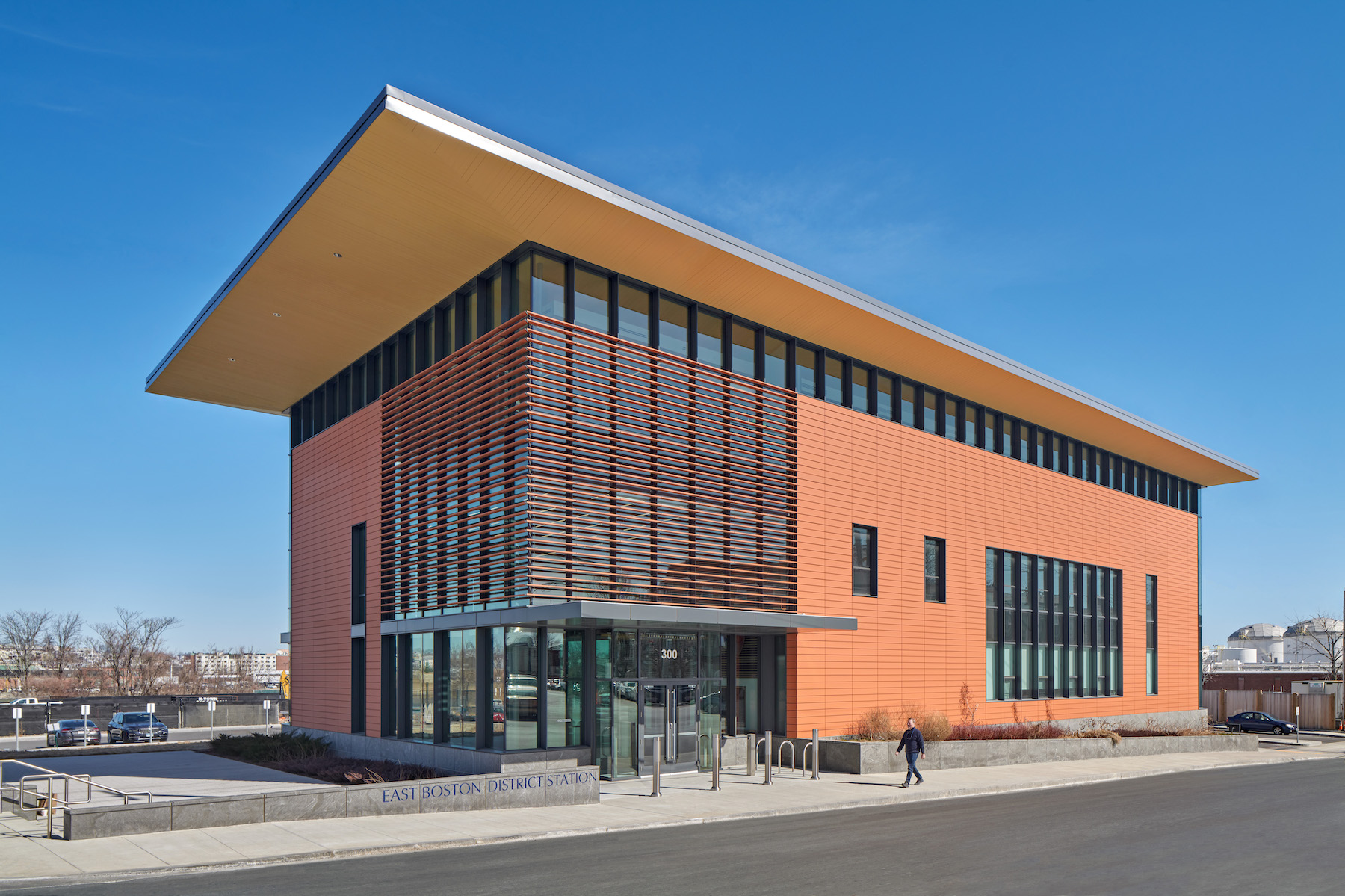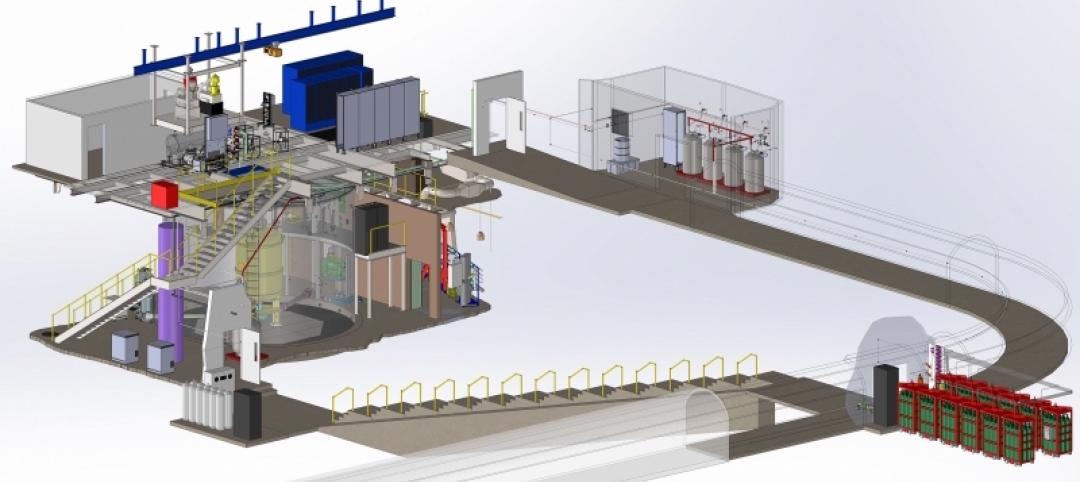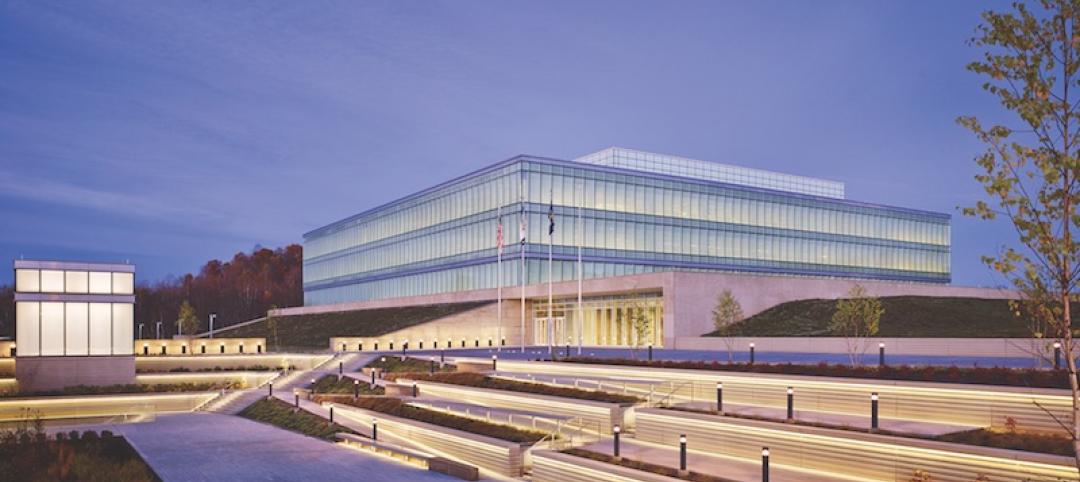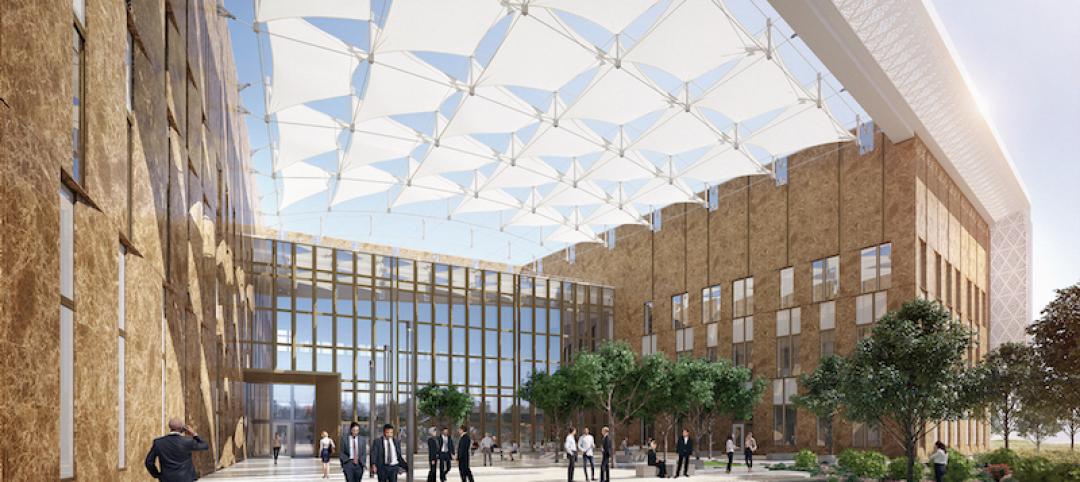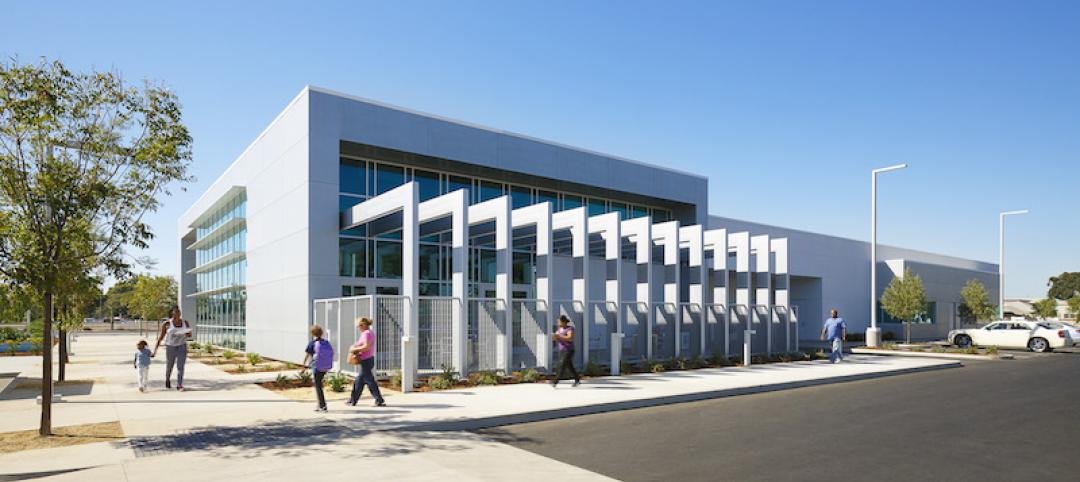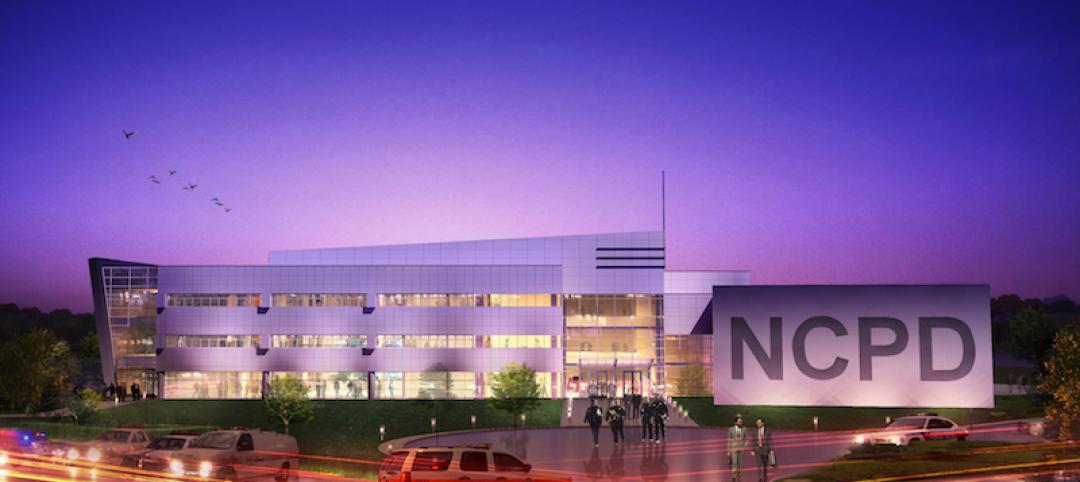A 2022 Gallup poll found that only 45 percent of surveyed American adults was confident in the police as an institution, down five percentage points from the previous year. That level of confidence dropped to 30 percent among non-white Americans polled.
Mistrust of the cops, exacerbated by high-profile incidents of law enforcement turned abusive and deadly, is not a problem with one answer, nor can appearance be a substitute for real reform. But can a building for whose design a community weighs in be part of the solution?
When the new Area 7 police station opened in East Boston, Mass., last January 1, it represented Beantown’s first new station in more than a decade, and as importantly a symbol of that city’s efforts to improve the relationship between its police force and the public at a time when community relations—in Boston as across the country—have been fraught with enmity.
Leers Weinzapfel Associates (LWA) designed the $25 million 27,500-sf East Boston District Station in collaboration with the City of Boston Public Facilities Department. The design followed several public meetings to hear the community’s opinions about the project, public safety, traffic, and accessibility, according to the boston.gov website, which reported the total cost for this project at $29.9 million.
“An investment in our municipal buildings is an investment in our City workers and our residents. This new state-of-the-art station provides the working environment our officers deserve and creates a more accessible experience for the local community,” said Boston’s Mayor Michelle Wu when the station opened.
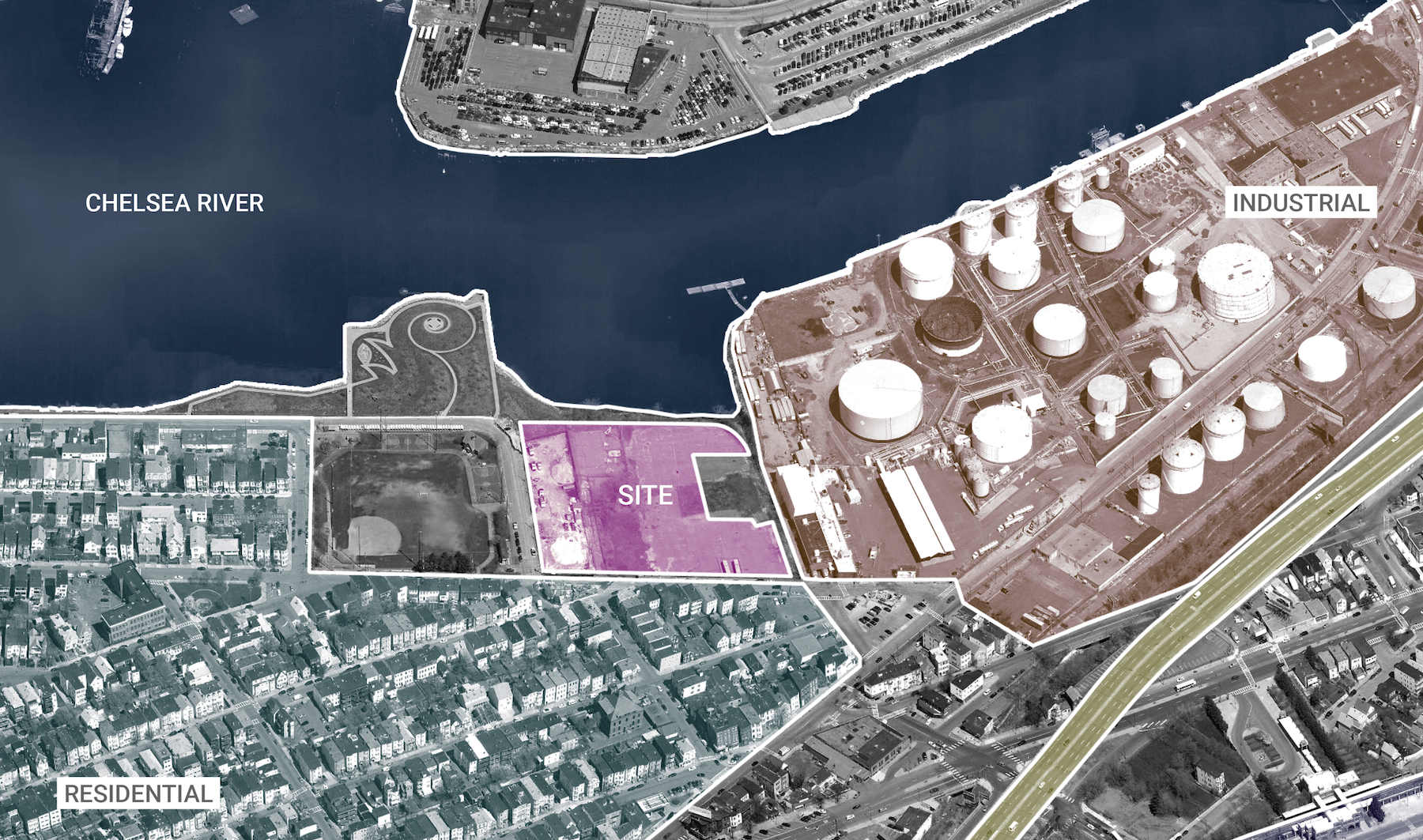
A less threatening and efficient environment
The new station was moved from the old station's location to enhance community access, improve dispatch response times by being closer to main transport arteries, and to serve as a sustainable, resilient facility (it’s certified LEED Silver) along the Chelsea River, where the building is positioned as a kind of “mediator” between this urban neighborhood’s industrial, commercial, and residential landscapes.
According to LWA, the station’s granite and terracotta structure responds to the scale of surrounding residential and public buildings. A corner of the station features a glass entry, lobby, and community room that coalesce to form a sun-filled public zone. Within the building, occupied spaces maximize daylight and views. Front supervisory desks have views of public areas and connections to police operations and detention zones. (The main building houses police operations, detective offices, a guard room, and lockers. Secure detention areas are in the rear of the building.)
“We saw this project as an opportunity to architecturally address the hot-button issue of community policing elevating the spaces, and therefore the experiences, where the police and those they serve come together,” said Josiah Stevenson, LWA’s Principal-in-Charge, in a prepared statement.
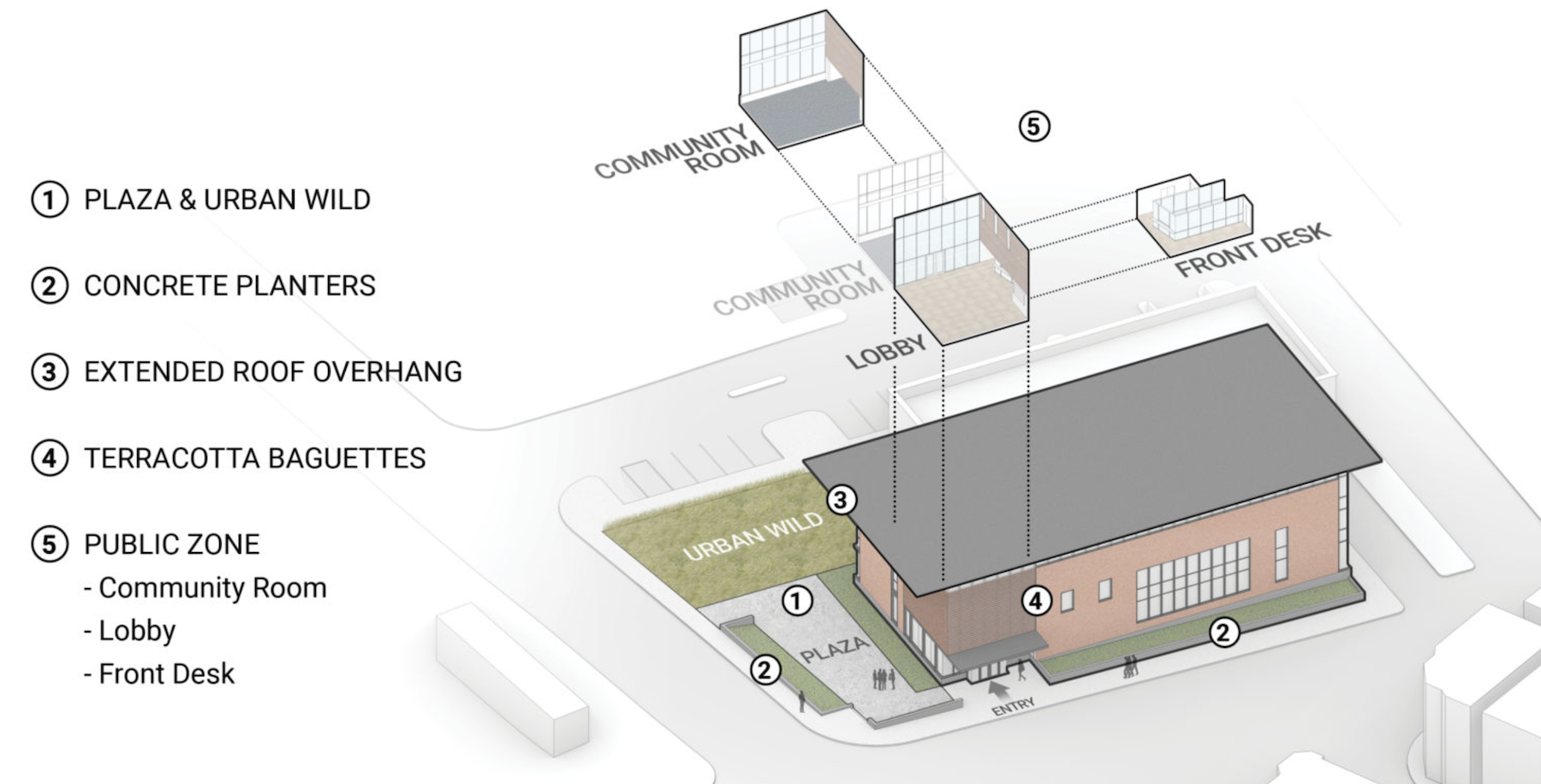

Stevenson elaborated that the Building Team—which included the structural engineering firm LeMessurier and general contractor J&J Contractors—created a double-height interior and used “warm” materials. The station’s site makes the most of views of the nearby creek and public plaza. A series of glass sculptures, dubbed “Unus Mundus” (”One World”) by its artist Monika Bravo, further accentuates a welcoming environment.
The new facility includes stormwater management and energy efficient systems.
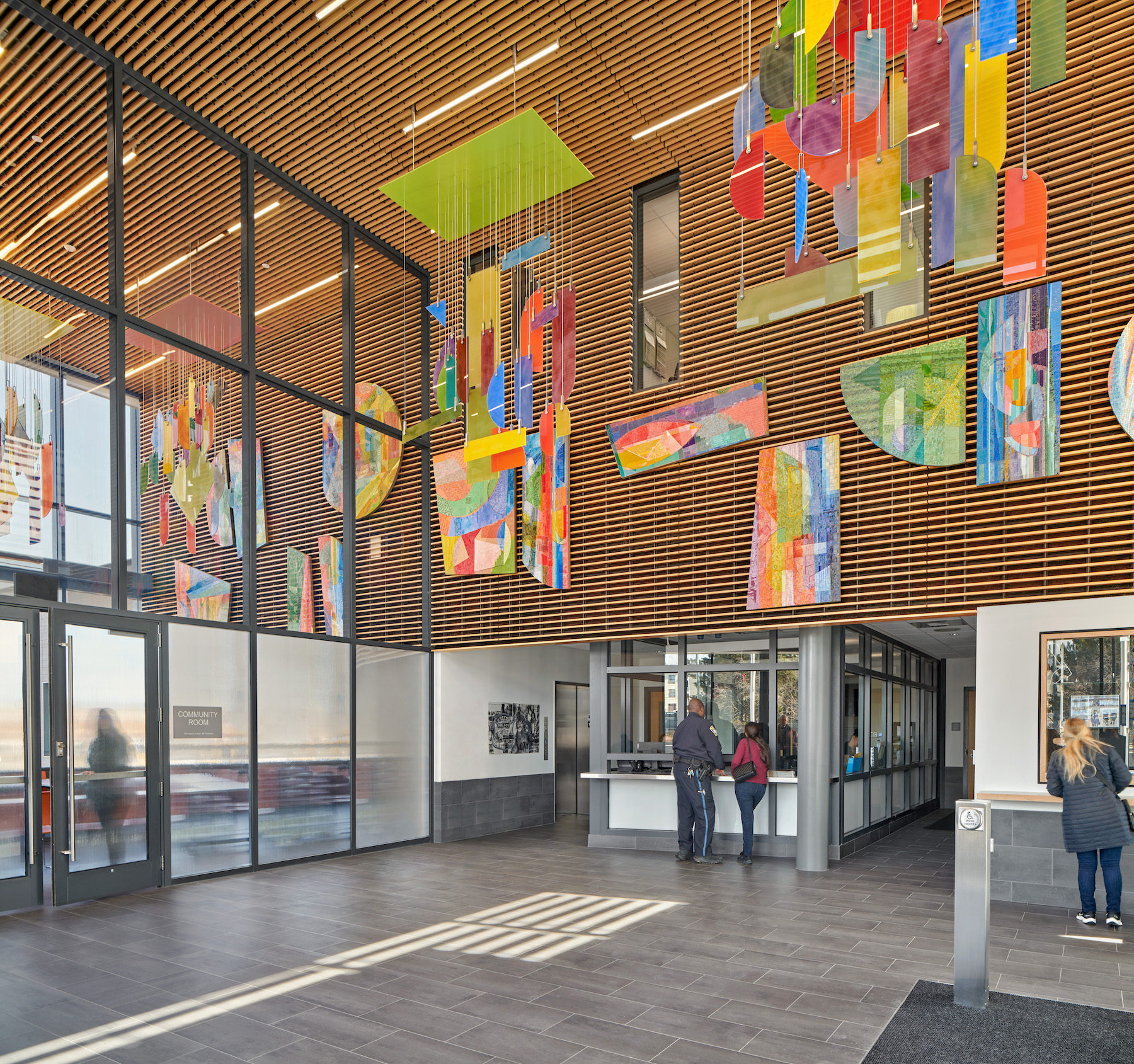
Right after the police station opened, Mayor Wu announced the allocation of $25 million for a new community center in Boston’s North End neighborhood. Last year, Wu announced a $2 billion plan to make the city’s public schools greener through new construction and renovation.
Related Stories
| May 24, 2018
Accelerate Live! talk: Security and the built environment: Insights from an embassy designer
In this 15-minute talk at BD+C’s Accelerate Live! conference (May 10, 2018, Chicago), embassy designer Tom Jacobs explores ways that provide the needed protection while keeping intact the representational and inspirational qualities of a design.
Government Buildings | Apr 26, 2018
DLR Group’s design for the new Lansing Correctional Facility focuses on energy-efficiency
JE Dunn will manage the design and construction of the Kansas-based facility.
Reconstruction & Renovation | Feb 7, 2018
Renovations begin on an underground facility that is investigating the nature of dark matter
This LEO A DALY-designed project makes way to produce the world’s most sensitive detector to this point.
Government Buildings | Dec 11, 2017
Is this the world’s most humane prison?
The C.F. Møller-designed prison’s architecture supports the inmates’ and staff’s mental and physical well-being.
Architects | Oct 11, 2017
Architects to policymakers: Buildings are infrastructure, too
Left out of this ongoing national debate over infrastructure are the nation’s other public buildings: the libraries, community centers, courthouses, community college buildings, affordable housing developments, and justice facilities.
Giants 400 | Oct 2, 2017
Delicate balance: Needs vs. capital for government agencies
John Caulfield, Senior Editor
Giants 400 | Sep 28, 2017
Top 85 government construction firms
Turner Construction Co., PCL Construction Enterprises, and Clark Group top BD+C’s ranking of the nation’s largest government sector contractors and construction management firms, as reported in the 2017 Giants 300 Report.
Giants 400 | Sep 28, 2017
Top 55 government engineering firms
WSP, AECOM, and Arup top BD+C’s ranking of the nation’s largest government sector engineering and EA firms, as reported in the 2017 Giants 300 Report.
Giants 400 | Sep 27, 2017
Top 95 government architecture firms
Stantec, HOK, and Gensler top BD+C’s ranking of the nation’s largest government sector architecture and AE firms, as reported in the 2017 Giants 300 Report.
Government Buildings | Jul 26, 2017
Spector Group unveils new law enforcement center for Nassau County
The center will serve as a regional training center for all Nassau County Police personnel.


